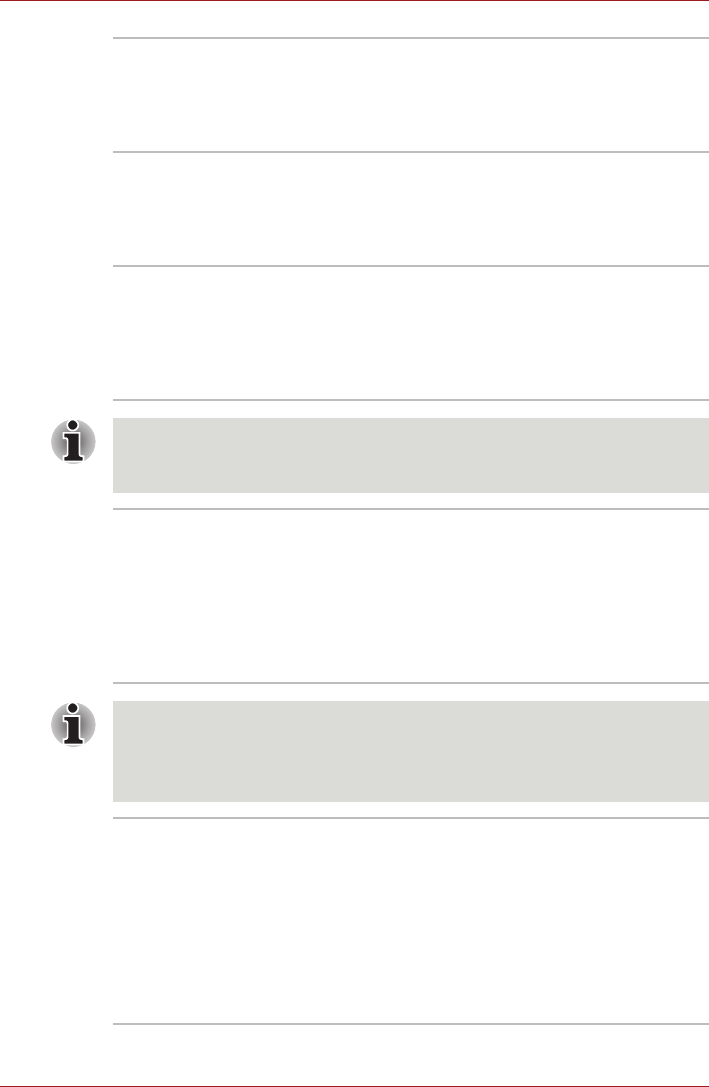
User’s Manual 3-12
Hardware, Utilities and Options
Panel power on/off
*1
This feature automatically turns power to the
computer off when the display panel is closed,
and turns it back on when the display panel is
opened. This can be specified in the Power
Options.
Low battery
automatic
Hibernation Mode
*1
When battery power is exhausted to the point that
computer operation cannot be continued, the
system automatically enters Hibernation Mode
and shuts itself down. This can be specified in the
Power Options.
Heat dispersal
*1
To protect against overheating, the processor has
an internal temperature sensor so that, if the
computer's internal temperature rises to a certain
level, the cooling fan is turned on or the
processing speed is lowered. This can be
specified in the Power Options.
If the processor's temperature reaches an unacceptably high level with
either setting, the computer will automatically shuts down to prevent any
damage - in this instance all unsaved data in memory will be lost.
TOSHIBA HDD
Protection
This feature uses the acceleration sensor built in
the computer to detect vibration and shocks, and
automatically moves the hard disk drive's
read/write head to a safe position in order to
reduce the risk of damage that could be caused
by head-to-disk contact. Refer to the Using the
Hard Disk Drive (HDD) Protection section in
Chapter 4, Operating Basics, for more details.
■ The TOSHIBA HDD Protection function does not guarantee that the
hard disk drive will not be damaged.
■ TOSHIBA HDD Protection cannot be used in models that are equipped
with SSD.
Optical Drive Auto
Lock
This function is provided with some models.
This function automatically locks the optical disc
drive eject button if the computer detects any
vibration or other shocks while running on the
battery.
This function prevents the disc tray from opening
even if the eject button is pushed unexpectedly.
Refer to the Optical Drive Auto Lock section in
Chapter 4, Operating Basics, for more details.


















